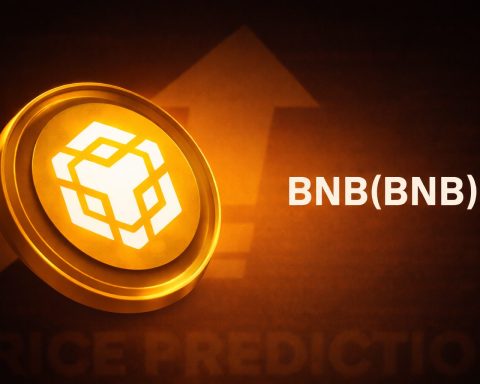JPMorgan Chase & Co. (NYSE: JPM) spent Monday trading just under the $300 mark, holding close to record territory even as a flurry of headlines swirled around the bank’s relationship with crypto, a third‑party data breach, and fresh recognition of its dividend strength. [1]
Below is a structured look at what moved the narrative around JPM today, November 24, 2025, and how these storylines fit into the broader investment picture.
JPM Stock Today: Near $300 After a Big 2025 Run
As of Monday’s close, JPMorgan shares were trading around $299, after moving in a relatively tight intraday range in the mid‑$294s to just under $300. Turnover was modest at roughly 4–4.2 million shares, well below the recent daily average of about 4.6 million. [2]
Over the last year, JPM has traded between roughly $202 and $322, putting today’s price near the upper end of its 52‑week range. [3]
That means:
- The stock is still consolidating after hitting all‑time highs above $320 earlier in November. [4]
- Valuation remains elevated relative to its own history, but not extreme versus other quality financials, with a P/E of about 14–15x and a price‑to‑earnings‑growth (PEG) ratio near 1.8, according to recent MarketBeat data. [5]
Against this calm price action, today’s news is anything but quiet.
1. Crypto Backlash and Boycott Calls After Strike CEO’s Accounts Are Closed
The loudest story around JPM today is not about earnings or loan growth—it’s about crypto politics and “debanking.”
What happened
- Strike CEO Jack Mallers, a prominent Bitcoin advocate, said JPMorgan abruptly closed his personal accounts in September 2025, citing unspecified compliance concerns. He shared a framed copy of the closure letter on X (formerly Twitter). [6]
- Around the same time, JPMorgan’s research team published a note warning that Strategy (MSTR, formerly MicroStrategy)—a company that holds roughly 650,000 Bitcoin—could face as much as $8.8 billion in forced outflows if index provider MSCI decides to exclude “digital asset treasury companies” from its equity indices in early 2026. [7]
Crypto‑focused outlets and trading communities have linked the account closures and that research note into a broader narrative: JPMorgan is being accused of running an “anti‑Bitcoin” agenda and putting pressure on Bitcoin‑linked equities such as Strategy.
Boycott campaign ramps up
Coverage from TheStreet, BeInCrypto, and others shows how quickly this has escalated into a reputational fight: [8]
- Influencers including Grant Cardone and Max Keiser have publicly urged followers to close their JPM accounts and avoid its products. Finbold notes that some users report doing exactly that. [9]
- Slogans like “boycott JPMorgan” have been trending in crypto circles, with criticism combining:
- alleged “crypto debanking”
- JPMorgan’s own warning about Strategy’s index risk
- and older controversies around the bank’s historical relationship with Jeffrey Epstein, which is now the subject of a formal Justice Department probe. [10]
So far, the stock has taken this in stride. Pre‑market, JPM was trading around $298.68, up about 0.2%, before ending the regular session roughly flat near $299. [11]
Why it matters for investors
- Reputational and political risk: The boycott is unlikely to dent JPM’s $3‑trillion‑plus balance sheet in the near term, but if it broadens beyond crypto circles it could further politicize the bank at a time when the DOJ is already investigating its past dealings with Epstein and prominent politicians are calling for continued scrutiny. [12]
- Regulatory overhang: Allegations of “debanking” come as policymakers across the political spectrum debate whether large banks can or should sever relationships with legal but controversial industries. That could translate into additional hearings, letters, or rulemaking.
- Client mix and growth: JPM has leaned into blockchain and tokenization (for example with JPM Coin and institutional tokenized payment projects), yet remains cautious toward some corners of crypto. That dual stance may help defend mainstream clients, but it risks alienating some high‑growth fintech and Bitcoin‑native businesses.
Right now, the backlash is more about headline and reputational risk than hard numbers—but it’s a theme worth watching if you care about JPM’s brand and regulatory footprint.
2. Third‑Party Data Breach: Cyber Risk Moves Back Into Focus
Separate from crypto, JPMorgan is also in the spotlight because of a data breach at one of the banking industry’s key vendors.
SitusAMC hack: what we know
- Real‑estate technology firm SitusAMC reported that hackers broke into its systems on November 12 and stole a range of sensitive information, including banks’ accounting records, legal agreements and some customer data. [13]
- Cybersecurity Dive notes that JPMorgan Chase was among several large banks affected, alongside peers like Citi and Morgan Stanley. [14]
- The FBI is assisting with the investigation and says there has been no operational impact to banking services so far. [15]
- SC Media reports that SitusAMC has about 1,500 clients, meaning a single breach could expose mortgage‑related data across many large banks simultaneously. [16]
Earlier, Reuters and CNN Business also highlighted that major Wall Street banks were warned some of their customer data might have been exposed, following the same breach. [17]
Investor takeaway
- This incident is a classic example of supply‑chain cyber risk: even banks with top‑tier security can be exposed through vendors.
- As of today, there is no evidence of material financial damage or disruption to JPM’s core operations. The bigger risk is longer‑term:
- possible regulatory scrutiny of third‑party risk management
- potential costs for notification, monitoring, and remediation
- and incremental pressure to invest even more in vendor oversight.
For now, the market appears to be treating this as a contained issue. But for a systemically important bank like JPM, recurring cyber headlines can influence how investors think about tail risk and capital buffers.
3. Income Story: JPM Named a “Top 25 Dividend Giant” and ETFs Announce Payouts
While crypto Twitter calls for boycotts, traditional income investors are watching a very different narrative.
JPM’s dividend profile gets fresh recognition
A Nasdaq / BNK Invest piece today named JPMorgan Chase a “Top 25 Dividend Giant.” Key points from the Dividend Channel data: [18]
- Roughly $116.22 billion of JPM stock is held inside ETFs—an enormous footprint across passive and smart‑beta funds.
- JPM currently pays an annualized dividend of $6.00 per share, in quarterly installments.
- At today’s price near $299, that works out to a yield of about 2.0%.
- The article highlights JPM’s strong dividend history and multi‑year growth in key fundamentals, which underpin its “DividendRank” stats.
In other words, even as traders debate crypto controversies, JPM continues to be treated as a core dividend holding in ETF land.
J.P. Morgan ETFs: JEPI and JEPQ announce November cash distributions
On the asset‑management side, J.P. Morgan Asset Management (Canada) Inc. announced final November cash distributions for two TSX‑listed income ETFs: [19]
- JPMorgan US Equity Premium Income Active ETF (JEPI) – distribution: C$0.12426 per unit (monthly).
- JPMorgan Nasdaq Equity Premium Income Active ETF (JEPQ) – distribution: C$0.21875 per unit (monthly).
Unitholders of record on December 1, 2025 will receive cash distributions on December 5, 2025. The release also reiterates that J.P. Morgan Asset Management oversees about US$4 trillion in AUM as of September 30, 2025. [20]
These moves don’t affect JPM’s common‑stock dividend directly, but they reinforce the bank’s positioning as a major global income platform—both via its own shares and via covered‑call and premium‑income ETF products.
4. Institutional Flows: Funds Trim and Add JPM Positions
Two MarketBeat “instant alert” notes published today highlight how institutional investors are fine‑tuning their exposure to JPM: [21]
- Davis Selected Advisers
- Trimmed its JPM stake by 0.6% in Q2, selling about 3,810 shares.
- Still holds 636,042 shares, worth roughly $184 million, making JPM its 27th‑largest holding. [22]
- RAM Investment Partners LLC
- Boosted its position by 63.7%, now holding 2,555 shares valued around $741,000. [23]
Both articles also point out that:
- Giant holders such as Kingstone Capital Partners Texas LLC, Geode Capital, Goldman Sachs, UBS and Nuveen either added to or maintained large stakes.
- Overall, about 71.5% of JPM’s shares are owned by institutional investors and hedge funds. [24]
The net message for stock watchers: JPM remains firmly in the “core holding” bucket for big money, with incremental position changes rather than dramatic shifts.
5. Strategic Real Assets: JPMorgan Increases Stake in UK PRS REIT
In the UK, JPMorgan is quietly expanding its footprint in the build‑to‑rent housing sector:
- A regulatory filing today shows JPMorgan Chase has increased its stake in The PRS REIT plc to over 7%. [25]
- PRS REIT specializes in professionally managed, purpose‑built rental homes across key UK regions.
According to coverage on Investing.com, the increased stake reflects growing institutional appetite for stable, inflation‑linked rental income streams supported by structural housing shortages in the UK. [26]
For JPM shareholders, this sort of move underscores:
- The bank’s multi‑asset strategy, reaching beyond traditional loans and bonds into real assets.
- A focus on long‑duration, income‑generating themes that can diversify revenue away from more cyclical trading and investment‑banking lines.
6. Brand and High‑Net‑Worth Engagement: NextList2026 and the New HQ
Not all of today’s headlines are about risk. One is pure branding—and very on‑message for JPM’s wealthy clientele.
J.P. Morgan today released its annual NextList2026, a curated collection of books, experiences, and wineries targeted at clients of its private bank and wealth‑management franchises. [27]
Highlights from the PR:
- The list features 11 books, 7 immersive experiences, and 3 wineries chosen to “spark curiosity and conversation” around finance, technology, wellness, arts, and culture.
- NextList2026 is explicitly “inspired by JPMorganChase’s new global headquarters” in New York, with at least one artwork from the building featured in the selection. [28]
- Recommendations are sourced from J.P. Morgan client advisors worldwide and vetted for global appeal.
On its face, this has little to do with quarterly EPS. But for a bank that competes fiercely for ultra‑high‑net‑worth clients, such curated content:
- Reinforces JPM’s image as a cultural and intellectual tastemaker, not just a transaction processor.
- Helps deepen relationships with families who might also be buyers of private banking, alternatives, philanthropy and estate‑planning services—all high‑margin businesses.
7. Credit Quality and Fundamentals: Moody’s Upgrade and Strong Q3
Underpinning all of this is a still‑solid fundamental story.
A recent piece (widely circulated via Finviz) notes that Moody’s upgraded JPMorgan’s long‑term deposit rating to Aa1 on November 11, citing the bank’s “superior financial performance” and industry‑leading profitability. [29]
Key figures from that coverage:
- Q3 profit rose 12% to about $14.39 billion.
- Revenue climbed roughly 9% to $47.12 billion.
- Moody’s also lifted JPM’s baseline credit assessment, leaving the bank among the highest‑rated large banks globally. [30]
Meanwhile, MarketBeat’s profile of JPM highlights: [31]
- Market cap around $810+ billion.
- A P/E ratio around 14.7, PEG near 1.8, and beta of roughly 1.1—suggesting moderate cyclicality.
- A 12‑month trading range of $202.16–$322.25.
- An analyst mix of 15 Buy, 9 Hold and 3 Sell ratings, with an average price target around $326, implying mid‑single‑digit upside from current levels.
Zacks, for its part, flagged JPM as one of the most‑searched tickers on its platform today, prompting a fresh article titled “JPMorgan Chase & Co. (JPM) is Attracting Investor Attention: Here is What You Should Know”. [32]
While we don’t have every detail of that paywalled note, Zacks typically focuses on:
- Earnings estimate revisions (which remain broadly constructive for JPM).
- Relative valuation versus other large banks.
- Momentum factors following JPM’s outperformance since its last earnings report.
8. Key JPM Stock Facts as of November 24, 2025
For quick reference, here are some of the most relevant datapoints from today’s coverage:
- Ticker: JPM
- Exchange: NYSE
- Price (approx. close): ~$299
- Today’s intraday range: ~$294.5 – $299.8 [33]
- 52‑week range:$202.16 – $322.25 [34]
- Trailing P/E: ~14–15x [35]
- Dividend:$6.00 per share annually, ~2.0% yield at current price [36]
- Credit rating: Long‑term deposit rating Aa1 (Moody’s) [37]
- Institutional ownership: ~71.5% of outstanding shares [38]
Bottom Line: Calm Price, Noisy Headlines
Today, JPMorgan’s share price looked almost boring—drifting slightly under $300 in a rising equity market. Yet beneath that calm surface, several storylines are evolving:
- Crypto backlash and boycott calls are testing JPM’s relationship with digital‑asset communities and raising fresh questions about “debanking” and political risk.
- A third‑party data breach at SitusAMC underscores ongoing cyber‑risk and the importance of vendor oversight, even when core systems are untouched.
- At the same time, the bank’s dividend strength, ETF income franchise, Moody’s upgrade, and continued institutional support reinforce its status as one of the world’s most systemically important—and still profitable—financial institutions.
For investors, the takeaway is nuanced:
- Short‑term price action suggests the market currently views these controversies as manageable.
- Medium‑term, reputational, regulatory and cyber risks bear watching, especially in a politicized environment.
- Long‑term, JPM remains positioned as a diversified, dividend‑paying blue chip with deep exposure to payments, wealth management, trading, and—ironically—blockchain infrastructure itself.
This article is for information and news purposes only and is not investment advice. Anyone considering JPMorgan stock should evaluate their own risk tolerance, time horizon, and financial situation, and consider speaking with a qualified financial adviser.
References
1. www.investing.com, 2. www.investing.com, 3. www.investing.com, 4. www.investing.com, 5. www.marketbeat.com, 6. finbold.com, 7. finbold.com, 8. www.thestreet.com, 9. finbold.com, 10. swingtradebot.com, 11. finbold.com, 12. swingtradebot.com, 13. www.cybersecuritydive.com, 14. www.cybersecuritydive.com, 15. www.cybersecuritydive.com, 16. www.scmagazine.com, 17. stockanalysis.com, 18. www.nasdaq.com, 19. seekingalpha.com, 20. seekingalpha.com, 21. www.marketbeat.com, 22. www.marketbeat.com, 23. www.marketbeat.com, 24. www.marketbeat.com, 25. www.investing.com, 26. www.investing.com, 27. www.prnewswire.com, 28. www.prnewswire.com, 29. finviz.com, 30. finviz.com, 31. www.marketbeat.com, 32. www.zacks.com, 33. www.investing.com, 34. www.investing.com, 35. www.marketbeat.com, 36. www.nasdaq.com, 37. finviz.com, 38. www.marketbeat.com







